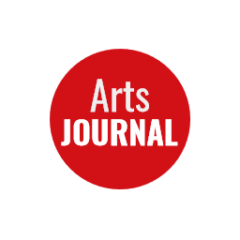“It’s a curious fact that very few writers have ever been able to write both good novels and good plays. Almost invariably, even the most acclaimed and technically skilled novelist turns into a rank amateur when writing for the theatre.”
Month: July 2006
How YouTube Is Changing Culture
“The thing about television used to be that once you saw it, it was gone. It was disposable, and it was mostly dispensed with—the old signals, from what we used to watch, streaming out past the Oort Cloud, carrying Lancelot Link, Secret Chimp away into infinity. Suddenly, via YouTube links, those lost moments click back into view, as if a telegram from your great-grandfather were showing up in your e-mail.”
Film Production Down In LA
“FilmL.A. on Tuesday reported a 6.8% drop in second-quarter film, TV and commercial on-location production days compared with the same period a year ago. The decline follows modest but steady gains of 4.1% during first-quarter 2006 and an annual growth rate of 4.3% in 2005, according to the nonprofit group, which facilitates permits for on-location production in the region.”
Da Vinci Code Helps Train Ticket Sales
The Da Vinci Code movie is being credited in part for a surge in traffic on the Eurostar train between London and Paris. “Eurostar said the partnership with the movie – whose cast included French actress Audrey Tatou – helped generate ‘strong interest in overseas markets’, with travel agents reporting increased sales on the London-Paris route.”
Chicago Art Institute Protests NYT Story
The Chicago Art Institute is protesting a caption and characterization of one of the museum’s artworks in the New York Times. The museum says that contrary to a Times caption, “a landscape painting by Gustave Courbet long owned by the Art Institute of Chicago was never found to have been confiscated by the Nazi regime in Germany during World War II.”
Will HD Reinvigorate Radio?
“Most stations have yet to modify their transmitters to support the technology, and the tuners, which can run from $300 to $3,000, exist almost exclusively for car stereos. But as traditional radio competes fiercely for listeners’ attention with CDs, MP3s and satellite radio, the industry is betting on HD to keep it relevant.”
Art Institute Disputes NYT Characterization
“Nowhere in the article is the Art Institute of Chicago even mentioned as one of the museums that responded in a timely manner to the survey sent by the Conference on Jewish Material Claims Against Germany; that the museum follows the guidelines of the American Association of Museums on Nazi-era provenance research; and that the Art Institute has been committed to provenance research since before the guidelines were issued.”
Chicago’s Ugliest Buildings
What are they? The Chicago Tribune has made a list…
Let’s All Jump On Bayreuth (It’s Time Again)
Bayreuth has only just opened and German newspapers are pondering whether the festival circuit has become too much. “The festivals in Bayreuth and Salzburg are the most prominent examples of an increasingly close network of festivals that now stretch across Europe from the south Pole to Andalusia,”
Irish Find 1000-Year-Old Psalter In Bog
“Irish archaeologists are celebrating the discovery of their own Dead Sea scrolls after a bulldozer unearthed fragments of a psalter that may have lain in a bog for more than 1,000 years.”
